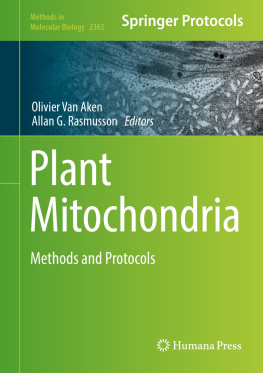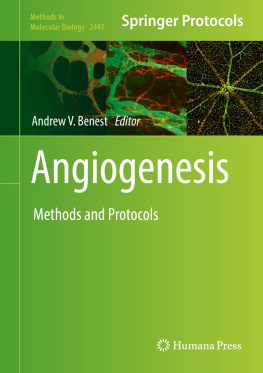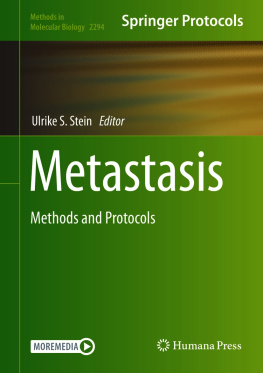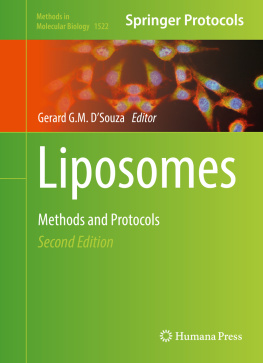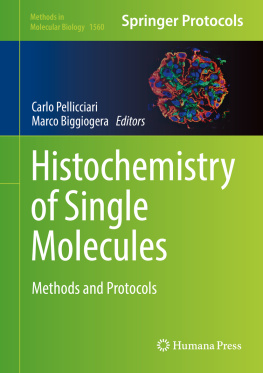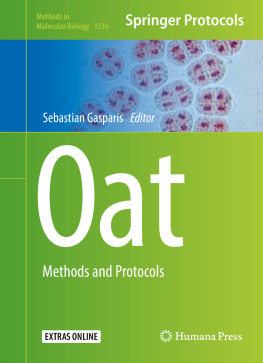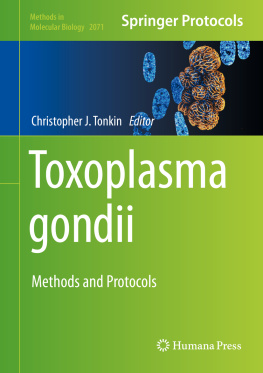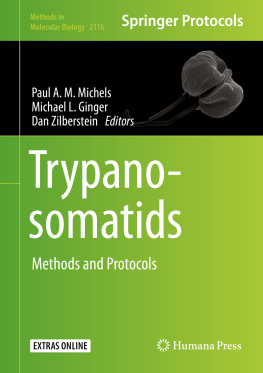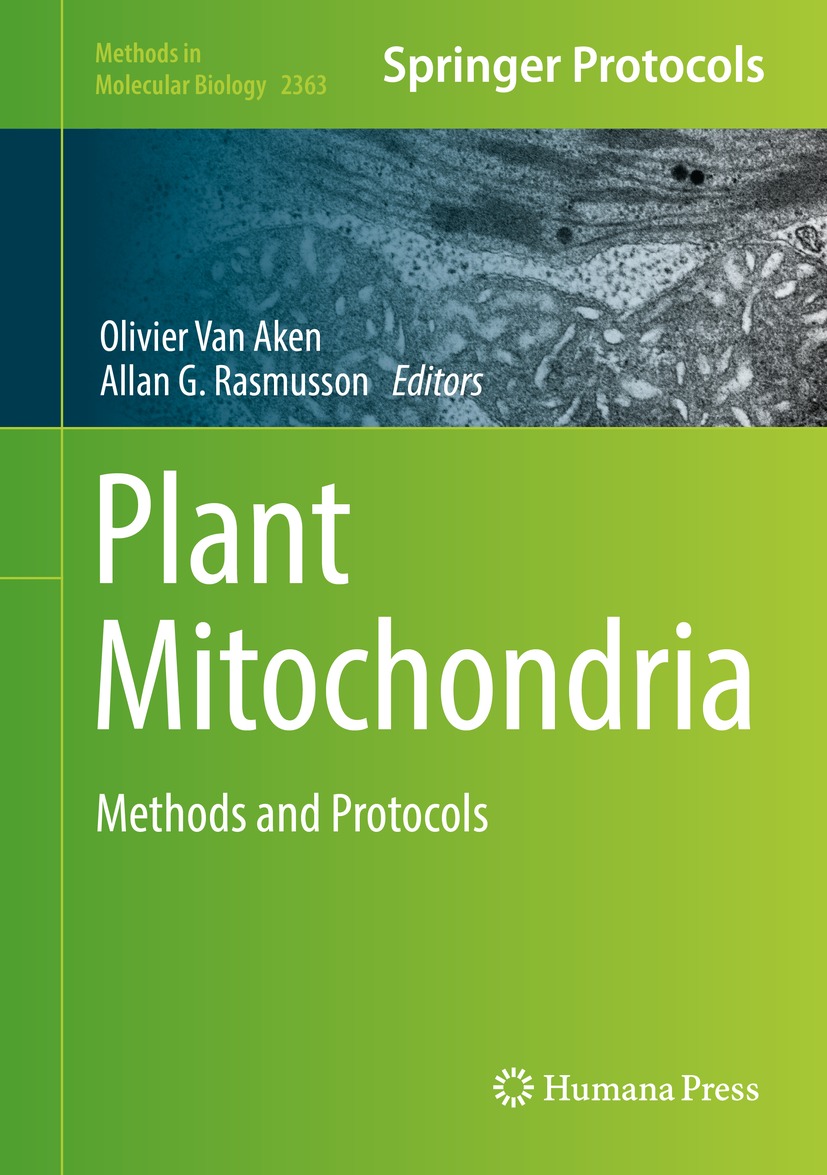Volume 2363
Methods in Molecular Biology
Series Editor
John M. Walker
School of Life and Medical Sciences, University of Hertfordshire, Hatfield, Hertfordshire, UK
For further volumes: http://www.springer.com/series/7651
For over 35 years, biological scientists have come to rely on the research protocols and methodologies in the critically acclaimed Methods in Molecular Biology series. The series was the first to introduce the step-by-step protocols approach that has become the standard in all biomedical protocol publishing. Each protocol is provided in readily-reproducible step-by-step fashion, opening with an introductory overview, a list of the materials and reagents needed to complete the experiment, and followed by a detailed procedure that is supported with a helpful notes section offering tips and tricks of the trade as well as troubleshooting advice. These hallmark features were introduced by series editor Dr. John Walker and constitute the key ingredient in each and every volume of the Methods in Molecular Biology series. Tested and trusted, comprehensive and reliable, all protocols from the series are indexed in PubMed.
Editors
Olivier Van Aken and Allan G. Rasmusson
Plant Mitochondria
Methods and Protocols
1st ed. 2022

Logo of the publisher
Editors
Olivier Van Aken
Department of Biology, Lund University, Lund, Sweden
Allan G. Rasmusson
Department of Biology, Lund University, Lund, Sweden
ISSN 1064-3745 e-ISSN 1940-6029
Methods in Molecular Biology
ISBN 978-1-0716-1652-9 e-ISBN 978-1-0716-1653-6
https://doi.org/10.1007/978-1-0716-1653-6
Springer Science+Business Media, LLC, part of Springer Nature 2022
This work is subject to copyright. All rights are reserved by the Publisher, whether the whole or part of the material is concerned, specifically the rights of translation, reprinting, reuse of illustrations, recitation, broadcasting, reproduction on microfilms or in any other physical way, and transmission or information storage and retrieval, electronic adaptation, computer software, or by similar or dissimilar methodology now known or hereafter developed.
The use of general descriptive names, registered names, trademarks, service marks, etc. in this publication does not imply, even in the absence of a specific statement, that such names are exempt from the relevant protective laws and regulations and therefore free for general use.
The publisher, the authors and the editors are safe to assume that the advice and information in this book are believed to be true and accurate at the date of publication. Neither the publisher nor the authors or the editors give a warranty, expressed or implied, with respect to the material contained herein or for any errors or omissions that may have been made. The publisher remains neutral with regard to jurisdictional claims in published maps and institutional affiliations.
Cover Illustration: Cover image by Sylwia Kacprzak, Ola Gustafsson and Olivier Van Aken.
This Humana imprint is published by the registered company Springer Science+Business Media, LLC part of Springer Nature.
The registered company address is: 1 New York Plaza, New York, NY 10004, U.S.A.
Preface
Plant respiration is the second largest biochemical process on the planet, with plant mitochondria collectively forming the largest group of respiring organelles [1, 2]. It is therefore no surprise that they have been the topic of intense research for over a century [35]. A wide range of experimental approaches has been designed and applied to the study of plant mitochondria, and excitingly, this tool kit is continuously being improved. When initially approached by John Walker, Editor-in Chief of the Methods in Molecular Biology book series, to edit a new book on Plant Mitochondria, the question arose whether sufficient technological progress had been made in the last 67 years. After some brainstorming about potential chapters, it quickly became clear that there were indeed more than enough subjects to be covered, ranging from tried-and-tested workhorse techniques to the latest innovations.
With the mission of making a stand-alone volume, we have tried to include novel techniques as well as to cover the basics for mitochondrial analysis. Without a doubt, the isolation of pure and intact mitochondria from plant tissues has been crucial in developing our knowledge. A nice historic overview of how plant mitochondrial isolation has been refined in the previous century is provided in the introduction of Chapter .
A large proportion of plant mitochondrial research has focused on visualizing and identifying the approximately 2000 mitochondrial proteins. Blue native polyacrylamide gel electrophoresis (BN-PAGE) has been a staple technique to separate the complex mitochondrial proteome in a way that preserves protein complex composition [7]. A further refinement of this technique coupled to mass spectrometry called complexome analysis is provided in Chapter ).
When studying known or suspected mitochondrial proteins, often a first step is to verify their translocation to mitochondria. A widely used technique uses transient transformations of plant cells using GFP-tagged proteins, which is described for protoplasts and leaf infiltrations in Arabidopsis thaliana (Chapter ), can provide important insights into mitochondrial protein expression, ribosomal function, and biogenesis of the respiratory chain complexes.
The mitochondrial respiratory chain plays an important role in maintaining cellular redox state. As an inevitable side reaction, the mitochondrial electron transport chain produces significant amounts of reactive oxygen species in the form of superoxide, which is rapidly converted into the more stable H2O2. A range of protocols to determine superoxide formation, lipid peroxidation, glutathione redox state, and protein carbonylation levels is presented in Chapter provides a state-of-the-art protocol for assessing the cysteine redox state of mitochondrial proteins using iodoTMT labeling and subsequent mass spectrometry.
As mentioned previously, mitochondrial DNA (mtDNA) encodes a set of important proteins but also tRNAs and rRNAs needed for translation of these genes. The study of mitochondrial promoter activity, transcription, and further post-transcriptional processes such as splicing and editing is thus key to get a full understanding of mitochondrial biogenesis. Chapter provides an elegant and intricate method to determine active mitochondrial mtDNA promoters and transcriptional start points using sequencing of nascent transcripts.
The last chapters in this book focus on the plant mitochondrial DNA itself. Chapter provides the recently established mitoTALEN protocol that now allows directed gene disruption in mitochondrial DNA with relatively high efficiency.
Overall, we think the end product of this project provides a highly useful set of methodologies for the plant mitochondrial community, and we are extremely thankful to all the people that contributed these excellent chapters. We are fully aware that there is currently a high demand for contributions to special issues and books, so we appreciate all the more the valuable time that you have spent in putting this book together and sharing your expert advice on the methodological details that are essential for success. Finally, we offer our apologies to the many outstanding researchers in the plant mitochondrial field that we may not have contacted to contribute to this book.

